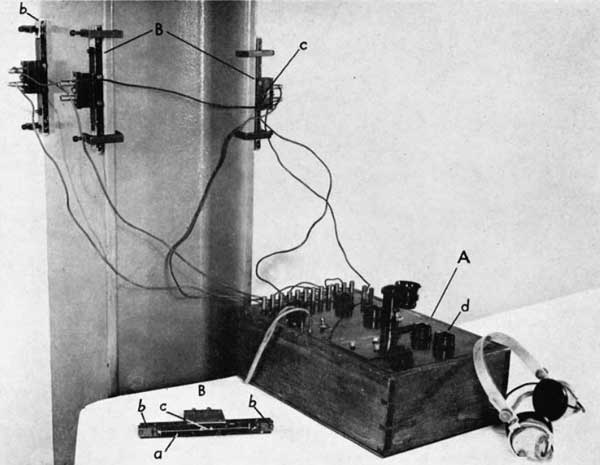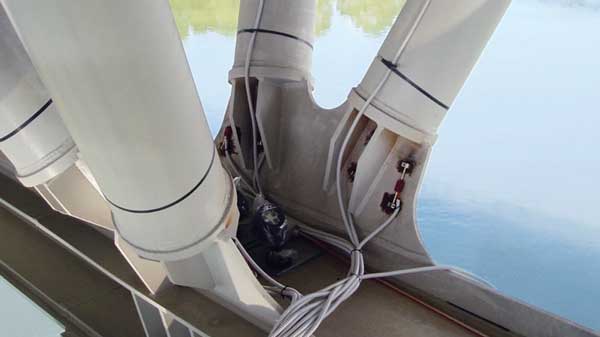Technical
More from the history of steel design code development
David Brown of the SCI looks at the work of Professor J. F. Baker, author of The Steel Skeleton, finding many issues of direct relevance to today’s designers and originally presented in a highly engaging style.
Certain publications in the SCI library have an elevated status, indicated by the note “Important historically – keep for reference”. One of these special publications is The Steel Skeleton by Professor Baker, which comes in two volumes. Volume 1 (1954) covers elastic behaviour and design. Volume 2 (1956) is co-authored with Horne and Heyman (all from the University of Cambridge) and addresses plastic behaviour and design.
Of particular interest – at least to the present author – is the writing style found in Volume 1. In addition to the technical guidance, Professor Baker offers a commentary on the changes to BS 449, the design standard of the time. The Professor had proposed revised approaches which were not adopted – the text reveals his disappointment often in an amusing style rather different to most sterile discussions found in text books. Although references were made to Professor Baker’s comments in the New Steel Construction article of September 2020, this article looks at some of the background and the sometimes pointed comments found in Volume 1.
The Background
Back in 1929 a Steel Structures Research Committee was established to develop the existing design rules which were felt to be too conservative. The Committee produced a First Report in 1931, which was embodied in BS 449. This report did not include the results of any new research, but was based on current practice. The Committee continued its work, including tests on existing buildings and showed that the method of design inherent in BS 449 was “almost entirely irrational and therefore incapable of refinement”. Professor Baker did not mince his words!
In 1936, the Committee produced a Final Report containing completely new “rational” design rules. When BS 449 was revised some 12 years later, in 1948, the Committee’s recommendations were ignored. Professor Baker postulates one reason for this neglect may have been that the store of Final Report was destroyed by enemy action in World War II. Professor Baker does not hide his disappointment in Volume 1, describing the guidance in BS 449 as “irrational rules”. Part of Professor Baker’s introduction expresses his view of the Committee’s objectives:
“While the pure scientist, secure in the ‘disinterested’ status of his research, can often follow the path of least resistance, skirting some nasty jagged rocks, the applied scientist must concentrate on those difficult places. He must get to the top of a particular rock. Not content with that achievement, he must prepare an easy road so that others, with less time and less elaborate equipment, can get there without difficulty whenever they wish”.
One of the founding objectives of SCI was to make steel easy to choose and use. Not so elegant as Professor Baker, but the same ideal.
Effective lengths
Professor Baker is most exercised by column design as presented in BS 449 (notably the very same requirements are followed in BS 5950 and presented in NCCI for design to EN 1993). When deciding column effective lengths, designers are directed to consider the restraint offered by beams connected to the column. Professor Baker describes the clauses as “irrational because no mention is made of the stiffness of the beams or the rigidities of the connexions on which the restraint at the end of the stanchion length must depend. Worse than this, such argument that there is for the assumption of an effective length less than the actual length is only tenable for the condition of pure axial load which is found nowhere but in that rare member, a symmetrically loaded internal stanchion”.
Ahead of his time?
Professor Baker also notes that as a column deflects under axial load, “restraining moments are introduced at the end of each storey length by the beams, which frame into the stanchion through connnexions of some rigidity, offering resistance to the change of slope. The presence of these restraining moments means that a member of given section can carry a greater axial load before the yield stress is developed than would have been the case had it been pin-ended”. Professor Baker points out the inconsistency of designing a beam as pin-ended, then “remembering” the rigidities of the connections when determining an effective length, and then conveniently forgetting the rigidity of the connections when calculating applied moments introduced by eccentric reactions.
Some 40 years later, Gibbons et al1 considered the same issue. The research investigated non-sway frames, aimed at quantifying the adverse effect of the moment transferred through simple beam to column connections on the column capacity. The study showed that in many cases, the benefit of the rotational restraint offered by the connection outweighs the detrimental effect of the moment transferred through it – exactly as Professor Baker had observed in the 1930s. Gibbons et al also concluded that the present methods of simple frame design (still used today in 2022) are highly conservative, sharing that view with Professor Baker. A second shared opinion is that “this approach”… (the verification of columns in braced frames in clause 4.7.7 of BS 5950) … “does not assist in the understanding of true behaviour and is not therefore likely to facilitate innovative design. Indeed, reliance on such approaches can be seen as a definite barrier to progress as the designer is not encouraged to develop a physical understanding of the way in which the structure actually ‘works’”. Not as colourful language as Professor Baker, who wished to stop designers “blindly applying irrational rules”, but the same sentiment!
Choice of a strain gauge
The Committee wished to undertake testing of physical buildings – and required a reliable strain gauge which would deliver a high order of accuracy “maintained under conditions of dirt, vibration, exposure and hurry which would seem intolerable to the laboratory worker”. The extensive reporting of the Committee’s efforts to obtain a strain gauge meeting those demands are entertaining and entirely unexpected in a highly technical publication. Professor Baker reports that “Every known type of strain gauge was examined to see if one could be modified to fit the rigorous specification”. A brochure was obtained describing an instrument, the Maihak extensometer, of German origin, as shown in Figure 1.
We read that “The claims made for it seemed so fantastic that the brochure was relegated to the waste-paper basket. When all other hope had gone, the waste-paper basket was searched and the brochure again studied”. The instrument involved an audible comparison between the note from a stressed wire (on the structure) and a gauge wire in the instrument. The initial tests were disappointing – “Other observers were called in, some with an ear for music, some without. The results were uniformly bad, and so with regret, the agent, who had brought the instrument to the test house, was dismissed”.
The reader then learns that on reflection, the Committee decided that perhaps greater amplification of the sounds was needed. The agent was called (who had conveniently mentioned where he was staying) and his departure delayed. This second test took place in the agent’s bedroom, with the instrument clamped to the agent’s brass bedstead. It is reported that “the scene was set – the morse key was pressed and a strong sustained note was heard. The investigator, full of hope, proceeded to match the notes, easily detected the beats and attempted to eliminate them by turning the micrometer head. Just when success seemed to be within his grasp, the beats would mysteriously appear again then disappear and so on.” They were about to condemn the instrument, but noticed that the agent was leaning over to look at the micrometer reading – “in doing so his weight came on the bed rail and so subjected it to a not inconsiderable strain which the gauge reported”. We go on to read that the party returned to the test house “triumphantly”. The prose in our modern reports, technical papers and publications appears rather bland in comparison.
Vibrating wire strain gauges using the principles of the Maihak extensometer are still used today – as seen in Figure 2.
Neglected recommendations
In summary, the Committee’s proposals for a more rational design method recommended using the beneficial effects of connection stiffness for beam design. For column design, rigid connections are assumed, but the moments in the column are determined from the stiffnesses of the beams and columns. The Committee’s recommendations were not accepted. The additional effort in the proposed design method did not deliver an advantage “which the average client would appreciate”. The proposed method would mean that a structure designed as a residential building, on change of use “might well prove strong enough for use as a light warehouse”. Again in eloquent language, Professor Baker envisaged a spreading of suburbia, meaning that urban flats might be reused as warehouses. In recent times, the opposite is true – urban structures are converted for residential use. At the time, Professor Baker commented that “Though the representatives of local authorities delight to argue, when faced with the request that a block of flats be designed for the intensity of load actually to be experienced in them, that the west-end of every city is continually moving farther westward so that the fashionable flats today will be the warehouses of tomorrow, such considerations are unlikely to weigh heavily with the prospective building owner”
BS 449 of 1948
There is understandable bitterness when Professor Baker comments on the 1948 revision of BS 449 which declined to adopt the Committee’s recommendations. He comments that the Committee’s work has been disregarded “and the designer has taken a step in the dark. If his position could be viewed dispassionately, it would be interesting to see if there was a tendency for the ground to crumble under his feet, for nothing has such a tonic effect as a threatened disaster”. Strong language indeed! Experience since 1948 suggests that the design methods remain safe, if conservative.
One of Professor Baker’s comments was that the recommendations failed “first because they did not lead to certain economy of material and second because they were complex”. It is interesting to reflect on the transition from BS 449 to BS 5950, the latter being considered more involved but producing some economy. One wonders what would be thought of the subsequent transition to the Eurocodes, with numerous Parts, National Annexes and NCCI. T
1 Gibbons, C. Nethercot, D. A. Kirby, P.A. Wang, Y. C.
An appraisal of partially restrained column behaviour in non-sway steel frames
Proceedings of the Institution of Civil Engineers. Structures and Buildings, 1993











